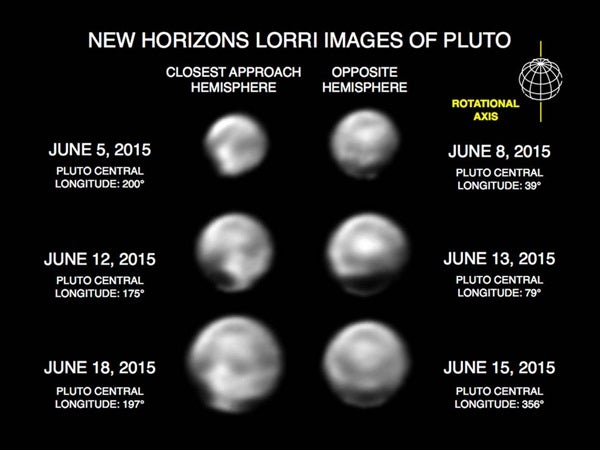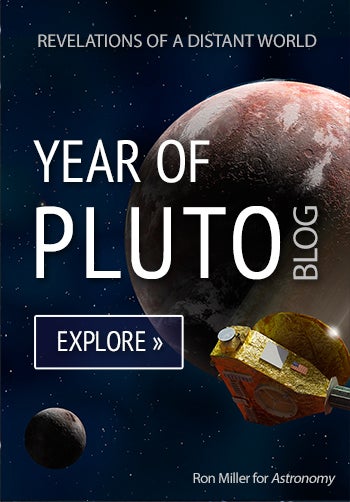In a long series of images obtained by New Horizons’ telescopic Long Range Reconnaissance Imager (LORRI) May 29–June 19, Pluto and its largest moon, Charon, appear to more than double in size. From this rapidly improving imagery, scientists on the New Horizons team have found that the “close approach hemisphere” on Pluto that New Horizons will fly over has the greatest variety of terrain types seen on the planet so far. They also have discovered that Charon has a “dark pole” — a mysterious dark region that forms a kind of anti-polar cap.
“And about Charon — wow — I don’t think anyone expected Charon to reveal a mystery like dark terrains at its pole,” Stern said. “Who ordered that?”
New Horizons scientists use a technique called deconvolution to sharpen the raw unprocessed pictures that the spacecraft beams back to Earth; the contrast in these latest images has also been stretched to bring out additional details. Deconvolution can occasionally produce artifacts, so the team will be carefully reviewing newer images taken from closer range to determine whether some of the tantalizing details seen in these images persist. Pluto’s non-spherical appearance in these images is not real; it results from a combination of the image-processing technique and Pluto’s large variations in surface brightness.
New Horizons is approximately 2.9 billion miles (4.7 billion kilometers) from Earth and just 16 million miles (25 million km) from Pluto. The spacecraft and payload are in good health and operating normally.











